Dacia Duster vs VW T-Roc – Kumpi auto on parempi valinta?
Molemmilla malleilla on vahvuutensa – mutta kumpi sopii sinulle paremmin?
Vertaa suorituskykyä, kulutusta, hintaa ja tiloja suoraan: Dacia Duster vai VW T-Roc?
A Head-to-Head SUV Comparison: Dacia Duster vs. VW T-Roc
The battle of the versatile compact SUVs rages on as we put the Dacia Duster and the VW T-Roc under the microscope. Both vehicles promise a blend of functionality, performance, and style. In this comparison, we'll dive deep into their key technical aspects and innovative features to help you decide which might be the right fit for you in 2024.
Engine and Performance
The Dacia Duster offers a diverse selection of engine types including LPG, Full Hybrid, and Petrol MHEV. Its power output ranges from 91 to 140 HP, providing a varied performance palette to cater to different driving preferences. With a 0-100 km/h acceleration ranging from 9.9 to 14 seconds, the Duster ensures modest yet practical speed, while its maximum speed peaks at 180 km/h.
On the other hand, the VW T-Roc presents a substantial lineup of petrol and diesel engines. The T-Roc can be equipped with engines delivering between 115 and a whopping 300 HP. This translates to a varied 0-100 km/h acceleration range between 4.9 to 12.3 seconds, offering both sporty and efficient performance options. The T-Roc impressively reaches a top speed of up to 250 km/h.
Transmission and Drive
When it comes to transmission, the Dacia Duster gives you the choice between a manual gearbox and an automated manual, paired with either front-wheel drive or all-wheel drive, aiming for a balanced driving experience.
Conversely, the VW T-Roc is available with a manual gearbox as well as the renowned dual-clutch automatic transmission, providing a smoother and more engaging drive. With options for both front-wheel and all-wheel drive, the T-Roc offers versatility for various driving conditions.
Fuel Efficiency and Sustainability
The Duster's fuel efficiency is commendable, with consumption figures ranging between 5 and 8.1 liters per 100km. Its CO2 emissions range from 114 to 147 g/km, falling within the C to E efficiency classes.
Meanwhile, the T-Roc showcases efficiency with its engines consuming between 4.7 and 8.5 liters per 100km. Its CO2 emissions span from 125 to 194 g/km, classed within D to G efficiency ranges, making it a slightly less eco-friendly option compared to the Duster.
Interior Space and Practicality
With a generous trunk capacity ranging from 430 to 517 liters and dimensions of 4343 mm length, 1813 mm width, and 1661 mm height, the Dacia Duster stands as a practical choice for families and adventurers alike.
The VW T-Roc offers a trunk capacity between 284 to 445 liters, and dimensions of 4271 mm length, 1819 mm width, and 1584 mm height. While it offers slightly less cargo space, it compensates with a compact design that makes urban navigation a breeze.
Final Thoughts
Both the Dacia Duster and VW T-Roc have their unique appeals. The Duster shines with its robust performance options and spacious interior, making it ideal for those in need of practicality without breaking the bank. The T-Roc stands out with its dynamic engine range and sporty driving experience, catering more to those looking for a dash of fun in their daily commute. Your choice will ultimately hinge on your priorities, whether space and budget or performance and innovation.
Tässä mennään yksityiskohtiin: tekniset erot tarkemmin
Kustannukset ja kulutus: Hinnan ja tehokkuuden vertailussa erot tulevat usein selvimmin esiin. Tässä ratkaistaan, kumpi malli sopii paremmin budjettiisi pitkällä aikavälillä.
Dacia Duster on hinnassa merkittävä edullisempi – sen lähtöhinta on 19000 €, kun taas VW T-Roc maksaa 30800 €. Ero on noin 11855 €.
Polttoaineenkulutuksessa näkyy ero: Dacia Duster kuluttaa 5 L ja on siten vähäinen taloudellisempi kuin VW T-Roc, jonka kulutus on 5.50 L. Ero on noin 0.50 L /100 km.
Moottori ja suorituskyky: Moottorin alta paljastuu, kumpi malli on urheilullisempi ja kiihtyy paremmin.
Moottoritehossa VW T-Roc on melkein huomaamaton etulyöntiasemassa – 150 hv verrattuna 140 hv:een. Ero on noin 10 hv hv.
Kiihdytyksessä 0–100 km/h VW T-Roc on vähän nopeampi – 8.90 s vs. 9.90 s. Ero on noin 1 s sekuntia.
Huippunopeudessa VW T-Roc on hieman edellä – se yltää 212 km/h:een, kun taas Dacia Duster saavuttaa 180 km/h. Ero on noin 32 km/h.
Vääntömomentissa näkyy myös ero: VW T-Roc vetää tuskin havaittava voimakkaammin, 250 Nm verrattuna 230 Nm:een. Eroa on noin 20 Nm.
Tila ja käytännöllisyys: Tehon ohella arjessa ratkaisevat mukavuus ja käytännöllisyys. Tässä selviää, kumpi auto on monipuolisempi ja tilavampi.
Molemmissa autoissa on tilaa 5 henkilölle.
Omapainossa Dacia Duster on melkein huomaamaton kevyempi – 1351 kg verrattuna 1465 kg:een. Painoero on noin 114 kg.
Tavaratilan koossa Dacia Duster tarjoaa kevyt enemmän – 517 L verrattuna 475 L:een. Ero on noin 42 L.
Maksimikantavuudessa Dacia Duster pärjää pienessä määrin paremmin – jopa 1609 L, noin 259 L enemmän kuin VW T-Roc.
Kantavuudessa VW T-Roc on jonkin verran parempi – 515 kg verrattuna 430 kg:een. Ero on noin 85 kg.
Yhteenvetomme: Dacia Duster osoittautuu olevan ylittää lähes kaikilla osa-alueilla ja saa siksi tittelin DriveDuel Champion!
Tässä vertailussa Dacia Duster on monipuolisempi kokonaisuus.
Dacia Duster
Duster on saanut paljon huomiota tämän päivän automarkkinoilla erinomaisella hinta-laatusuhteellaan. Sen rohkea muotoilu ja korkeampi maavara tekevät siitä erinomaisen valinnan niin kaupunkiajoon kuin maastokokeiluihinkin. Tämä kompakti SUV yhdistää käytännöllisyyden ja tyylikkyyden, joten se houkuttelee monia erilaisia kuskeja.
Tiedot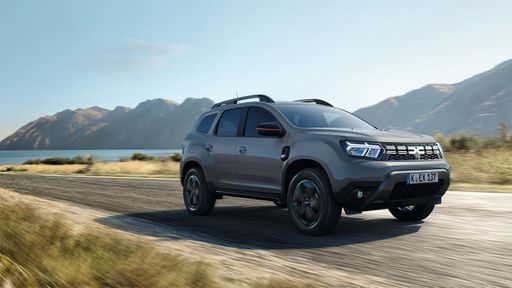 @ dacia-presse.de
@ dacia-presse.de
 @ dacia-presse.de
@ dacia-presse.de
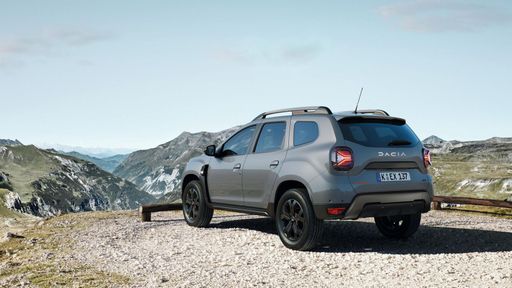 @ dacia-presse.de
@ dacia-presse.de
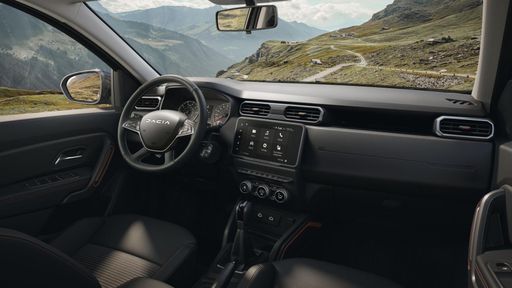 @ dacia-presse.de
@ dacia-presse.de
VW T-Roc
Volkswagen T-Roc on moderni ja tyylikäs kompaktik SUV, joka yhdistää mukavuuden ja käytännöllisyyden. Sen rohkea muotoilu ja monipuoliset sisätilat tekevät siitä erinomaisen valinnan sekä kaupunkiajoon että pidemmille matkoille. T-Roc tarjoaa myös laajan valikoiman älykkäitä varusteita, jotka parantavat ajokokemusta ja turvallisuutta.
Tiedot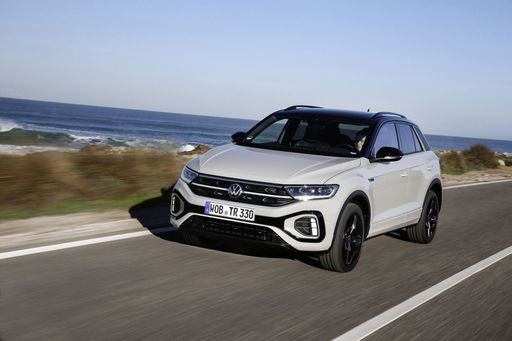 @ Volkswagen
@ Volkswagen
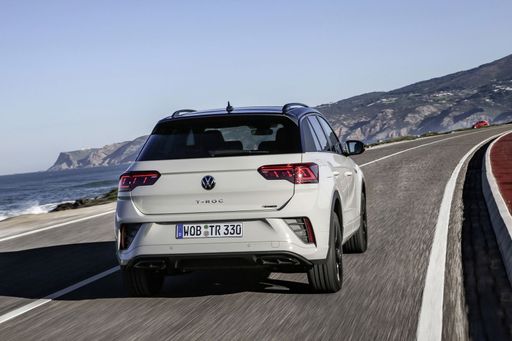 @ Volkswagen
@ Volkswagen
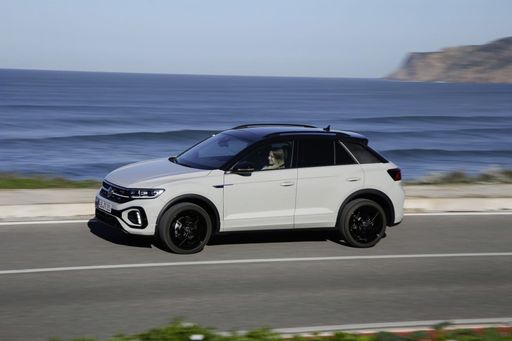 @ Volkswagen
@ Volkswagen
 @ Volkswagen
@ Volkswagen

|

|
|
|
|
Kustannukset ja kulutus |
|
|---|---|
|
Hinta
19000 - 29000 €
|
Hinta
30800 - 44300 €
|
|
Kulutus L/100km
5 - 7.6 L
|
Kulutus L/100km
5.5 - 6.3 L
|
|
Kulutus kWh/100km
-
|
Kulutus kWh/100km
-
|
|
Sähköinen toimintasäde
-
|
Sähköinen toimintasäde
-
|
|
Akun kapasiteetti
0.60 kWh
|
Akun kapasiteetti
-
|
|
CO2
113 - 148 g/km
|
CO2
126 - 143 g/km
|
|
Polttoainesäiliön tilavuus
49 - 55 L
|
Polttoainesäiliön tilavuus
50 L
|
Mitat ja kori |
|
|---|---|
|
Kori
SUV
|
Kori
SUV
|
|
Istuimet
5
|
Istuimet
4 - 5
|
|
Ovet
5
|
Ovet
2 - 5
|
|
Omamassa
1351 - 1465 kg
|
Omamassa
1465 - 1539 kg
|
|
Tavaratila
430 - 517 L
|
Tavaratila
284 - 475 L
|
|
Pituus
4343 mm
|
Pituus
4271 - 4373 mm
|
|
Leveys
1813 mm
|
Leveys
1811 - 1828 mm
|
|
Korkeus
1656 - 1661 mm
|
Korkeus
1527 - 1573 mm
|
|
Maksimi tavaratila
1545 - 1609 L
|
Maksimi tavaratila
1350 L
|
|
Kantavuus
414 - 430 kg
|
Kantavuus
368 - 515 kg
|
Moottori ja suorituskyky |
|
|---|---|
|
Moottorityyppi
Kaasu (LPG), Täyshybridi, Bensiini MHEV
|
Moottorityyppi
Bensiini, Bensiini MHEV
|
|
Vaihteisto
Manuel, Automaatti
|
Vaihteisto
Manuel, Automaatti
|
|
Vaihteiston tyyppi
Manuaalivaihteisto, Automaattinen manuaalivaihteisto
|
Vaihteiston tyyppi
Manuaalivaihteisto, Kaksoiskytkin automaatti
|
|
Vetotapa
Etuveto, Neliveto
|
Vetotapa
Etuveto
|
|
Teho hv
91 - 140 hv
|
Teho hv
115 - 150 hv
|
|
Kiihtyvyys 0-100 km/h
9.9 - 14 s
|
Kiihtyvyys 0-100 km/h
8.9 - 12.3 s
|
|
Huippunopeus
160 - 180 km/h
|
Huippunopeus
187 - 212 km/h
|
|
Vääntömomentti
160 - 230 Nm
|
Vääntömomentti
200 - 250 Nm
|
|
Sylinterien lukumäärä
3 - 4
|
Sylinterien lukumäärä
3 - 4
|
|
Teho kW
67 - 104 kW
|
Teho kW
85 - 110 kW
|
|
Iskutilavuus
999 - 1598 cm3
|
Iskutilavuus
999 - 1498 cm3
|
Yleiset |
|
|---|---|
|
Mallivuosi
2024 - 2025
|
Mallivuosi
2024 - 2025
|
|
CO2-tehokkuusluokka
D, C, E
|
CO2-tehokkuusluokka
E, D
|
|
Merkki
Dacia
|
Merkki
VW
|
Mitä vetotapavaihtoehtoja Dacia Duster tarjoaa?
Mallia tarjotaan Etuveto tai Neliveto-versiona.
Näytetyt hinnat ja tiedot ovat arvioita, jotka perustuvat Saksan listahintoihin, ja voivat vaihdella maittain. Nämä tiedot eivät ole oikeudellisesti sitovia.
